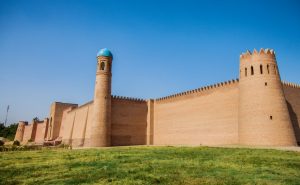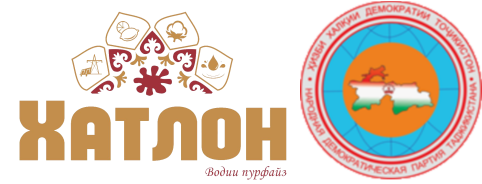
Hulbuk castle
14.07.2023 /
admin
/ 0 Comments
Khulbuk fortress dates back to the X-XI centuries. However, subsequent excavations showed that the fortress was built on an older structure, that is, it was originally built a very long time ago, probably a thousand years ago, during the reign of the Kushans, later renovated and finally rebuilt over a very large area.
The ancient Khulbuk fortress is completely different from other ancient buildings. Often such citadels were built on the slopes of mountains or at the heights of city entrances and had a defensive value. But Hulbuk Castle was built on a flat surface, and its location is known as the capital of a large province. Consequently, there are very few military finds in Khulbuk, but on the contrary, there are all the features of a civilized city: the walls of the fortress were built by ancient architects from old bricks, and then covered with burnt bricks. Many of the castle houses are large and spacious, connected by a corridor with polished bricks on the floor, like the parquet floors of medieval Roman buildings. The walls of most of the halls were very interesting and unique, depicting unique landscapes — beautiful nature, images of warriors, beautiful musicians and dancers, individual musical instruments. Also, the plaster carvings gave a beautiful look to the entire palace. All this can be found in the writings of ancient historians.
The reason for the flat construction of Khulbuk was that it was located in the floodplain of the Oksu and Yakhsu river valley and was in the center of the Silk Road caravan route and many caravans from all countries of the Silk Road — China, India, Peshawar, Kandahar, Iran and Rome, relaxed a little and then continued on their way to Hisar, Samarkand and Bukhara, or, conversely, before going to the desert and mountainous regions, they received the necessary food here. Of course, across the road between countries open to traders, large caravans, as always, carried equal wealth, as well as peace and joy, and a fruitful cultural exchange of different peoples took place. Consequently, in Khulbuk there are traces of the civilization of four ancient empires — China, Bactria and Rome and Iran.
Ancient Khulbuki is located next to the Dushanbe-Kulyab highway and is accessible to domestic and foreign tourists, amateurs and students of history.





Добавить комментарий Отменить ответ
Для отправки комментария вам необходимо авторизоваться.
Ҷустуҷӯ
Хабарҳои охирин
- Program of the International Tourism Forum and Exhibition «Welcome to Ancient Khatlon» 20.02.2024
- ФОРУМ ВА НАМОИШГОҲИ БАЙНАЛМИЛАЛИИ САЙЁҲИИ МАРҲАБО БА ХАТЛОНИ БОСТОН TOURISM FORUM AND EXHIBITION WELCOME TO ANCIENT KHATLON 20.02.2024
- Натиҷагирии фаъолияти Кумитаи рушди сайёҳӣ дар соли 2023 ва вазифаҳо барои соли 2024 09.01.2024
- Achievements of the tourism sector of the Khatlon region 18.12.2023
- Мақбараи Мавлоно Қутбиддини Нишопурӣ/Мавзолей Мавлоно Кутбиддина Нишопури/Mausoleum of Mavlono Qutbuddin Nishopuri 04.12.2023
Хазина
- Февраль 2024 (2)
- Январь 2024 (1)
- Декабрь 2023 (2)
- Ноябрь 2023 (5)
- Октябрь 2023 (9)
- Сентябрь 2023 (7)
- Август 2023 (2)
- Июль 2023 (13)
- Май 2023 (5)
- Апрель 2023 (1)
- Март 2023 (30)
- Февраль 2023 (21)
- Январь 2023 (16)
- Декабрь 2022 (8)
- Ноябрь 2022 (7)
- Август 2022 (9)
- Июль 2022 (4)
- Апрель 2021 (11)
- Март 2021 (8)
- Июль 2020 (4)
- Июнь 2020 (6)
- Апрель 2020 (2)
- Март 2020 (2)
- Февраль 2020 (2)
- Январь 2020 (2)
- Октябрь 2019 (3)
- Июль 2019 (3)
- Июнь 2019 (6)
- Май 2019 (3)
